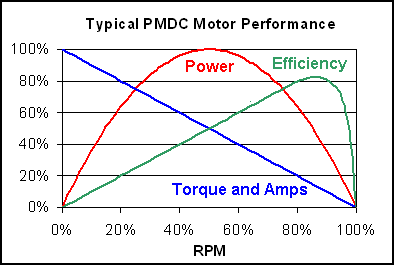At SolarFest I talked a lot about the power delivery of an electric drivetrain, and I just wanted to throw two basic plots up – the power curves from a gas and electric drivetrain. Granted, these two are more “typical” plots than are specific dyno charts, but they do make the point. Here you go:
So that’s a gas engine. Off of idle it’s giving you very low torque, and as it spools up you’re getting higher power – the effective combination of your torque and your RPM.
Here’s what an electric motor does:
This is pretty oversimplified, but it makes the point that your torque is at it’s very highest at 0 RPM. As it spools up it drops, but your power, again, increases with your RPM.
Here’s probably a better side-by-side comparison via Tesla’s site, but you’re looking at only the torque comparison:
OK, now I also talked a lot about motor ratings. Here’s the thing about motor ratings. A gas HP rating is taken from the peak of this curve, because what you’re interested in when looking at gas motors is that one highest output point where you can apply power (with a transmission) using a very select RPM range. You almost never are going to run your motor at that peak power for more than a few seconds, in fact, in a car or motorcycle it’s almost impossible. So, for example, on the top curve you’d rate that gas motor at 150kw.
When you’re building a machine that uses an electric motor, in the past, you’ve been concerned with what the power level of the motor is for continuous use without failure. You’re not looking at a 0-60mph time for a refrigerator, right? You may be concerned with starting torque if your application is to spool up some massive thing that doesn’t really want to spool up, like, oh, a flywheel or something, but in looking at ratings you have to keep in mind the traditional applications of the motors. So it’s an apples-to-oranges rating of how much you can load the motor for 24-7 use. In the case of the chart above, let’s say our rating is going to be 60% of the peak output.
Take a look at my post on electric motor HP ratings, over here, for more detailed information, but it’s really as simple as that.



Yeah. You can never have too much torque. 🙂
http://evtv.me/2014/07/milling-mire/